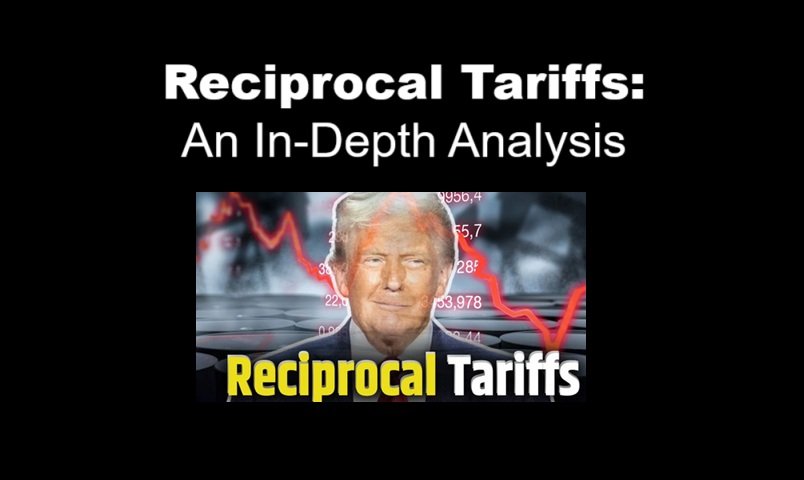
Introduction
Reciprocal tariffs are a critical component of international trade policies, shaping the economic relationships between nations. These tariffs are imposed in response to duties or trade barriers set by another country, creating a balance or countermeasure in trade agreements. This article explores the concept, historical context, economic implications, and real-world examples of reciprocal tariffs, shedding light on their significance in global trade.
Understanding Reciprocal Tariffs
Reciprocal tariffs refer to the practice of imposing equivalent tariffs on imports from a country that has levied similar duties on exports from the imposing nation. This approach is used as a negotiation tool to ensure fair trade practices and prevent economic disadvantages for domestic industries.
Governments utilize reciprocal tariffs to promote balanced trade and discourage protectionist policies that could harm economic partnerships. By responding to a trading partner’s tariffs with equivalent measures, countries aim to encourage fair competition and equitable market access.
Historical Context
The concept of reciprocal tariffs dates back centuries and has played a significant role in shaping international trade dynamics. Some notable historical instances include:
- Smoot-Hawley Tariff Act (1930) – This U.S. legislation significantly raised import duties, leading to retaliatory tariffs from other nations, exacerbating the Great Depression.
- Reciprocal Trade Agreements Act (1934) – Introduced by the U.S., this act allowed the president to negotiate tariff reductions with other nations on a reciprocal basis, fostering economic recovery and international trade cooperation.
- World Trade Organization (WTO) and GATT (General Agreement on Tariffs and Trade) – Post-World War II agreements encouraged reciprocal tariff negotiations to reduce trade barriers and prevent retaliatory trade wars.
- U.S.-China Trade War (2018-2020) – Both nations imposed reciprocal tariffs on billions of dollars’ worth of goods, affecting global supply chains and leading to economic uncertainties.
Economic Implications of Reciprocal Tariffs
The implementation of reciprocal tariffs has both advantages and disadvantages, depending on the economic and geopolitical context.
Advantages
- Fair Trade Practices – Encourages trading partners to engage in fair trade agreements, preventing exploitation by countries that impose disproportionately high tariffs.
- Domestic Industry Protection – Shields local industries from unfair competition and price dumping by foreign producers.
- Negotiation Leverage – Serves as a bargaining tool in trade negotiations to secure better market access for domestic exporters.
- Revenue Generation – Helps governments raise revenue from import duties, which can be reinvested into domestic economic development.
Disadvantages
- Trade Wars and Economic Disruptions – Reciprocal tariffs can escalate into full-fledged trade wars, disrupting global supply chains and increasing costs for businesses and consumers.
- Higher Consumer Prices – Import duties lead to increased costs for imported goods, resulting in inflationary pressures.
- Reduced Market Access – Domestic exporters may face retaliatory tariffs, limiting their access to international markets and reducing competitiveness.
- Investment Uncertainty – Unpredictable trade policies discourage foreign direct investment (FDI) and economic cooperation.
Real-World Examples
Several notable instances highlight the impact of reciprocal tariffs in modern trade:
- U.S.-China Trade War: The U.S. imposed tariffs on Chinese goods citing unfair trade practices, prompting China to retaliate with equivalent tariffs on American exports, affecting industries such as agriculture, technology, and manufacturing.
- U.S.-EU Trade Relations: The European Union and the U.S. have engaged in reciprocal tariffs on steel, aluminum, and agricultural products, impacting industries on both sides.
- India vs. U.S. Trade Dispute: In response to U.S. tariff hikes on steel and aluminum, India imposed counter-tariffs on American goods, affecting bilateral trade.
- UK-EU Post-Brexit Trade: The imposition of tariffs in response to trade barriers between the UK and EU has influenced trade flows and economic policies post-Brexit.
The Role of International Trade Organizations
Organizations such as the World Trade Organization (WTO) and regional trade blocs, including the European Union (EU) and North American Free Trade Agreement (NAFTA, now USMCA), play a crucial role in mediating tariff disputes and promoting reciprocal trade agreements. Through arbitration and negotiations, these entities aim to prevent trade conflicts and encourage economic cooperation.
Conclusion
Reciprocal tariffs serve as a double-edged sword in global trade. While they ensure fair trade practices and protect domestic industries, they also pose risks of escalating trade conflicts and economic disruptions. Governments must carefully navigate these policies to balance protectionism with open-market principles, ensuring economic stability and growth.
The future of reciprocal tariffs will likely be shaped by ongoing trade negotiations, technological advancements, and shifts in global economic power. As nations strive for economic resilience, reciprocal tariffs will remain a pivotal tool in shaping international trade policies.





